Book Reviews
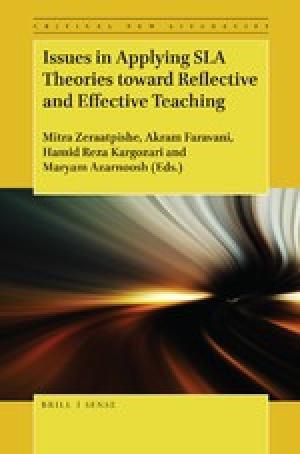
Issues in Applying SLA Theories (hereafter Issues) comprises volume seven in the series, Critical New Literacies: The Praxis of English Language Teaching and Learning (PELT). What is meant by reflective teaching? In their article on writing, Zeraatpishe and Azarnoosh offer the following definition: “Reflection is regarded as a process through which teachers observe their beliefs and practices, assess, restructure their teaching and learning so that they can better situate themselves as agents of change in the immediate contexts of teaching” (165). Effective teaching, in contrast, involves conscious monitoring of student needs and progress, followed by corresponding adjustments in one’s instruction. Issues is a collection of fourteen essays by a global array of authors. Most hold doctoral degrees, with teaching experience ranging from assistant professors to emeritus professors. Several serve as editors of major publications in the field of Second Language Acquisition. Part One concentrates on six theories that have influenced language learning pedagogy. Part Two addresses eight skills necessary for learning a language. Theories explored in Part One include behaviorism, cognitive approaches, constructivism, connectionism, interactionism, and critical theories. Behaviorism’s attention to stimulus and response led to the emphasis on language drills found in the Audio-Lingual Method. Cognitive approaches bring together rationalist and empiricist viewpoints, valuing both Chomsky’s innate Universal Grammar and also the importance of learning through experimentation. Constructivism in language learning involves forming increasingly more complex categories of information by analyzing similar elements, whether individually (cognitive constructivism) or in community (social constructivism). Connectionism draws from the design of digital computers to consider how parallel distributed processing (or artificial neural networks) serve the task of pattern recognition. Interactionism holds that language learners benefit from conversational communication, which involves input, negotiation of meaning, noticing, and second language output. Critical Second Language teaching would value “a listening phase on the part of the course designer or teacher, and… finding out about the learners’ real lives and needs” (70), then creatively adjusting the course correspondingly. The remaining eight chapters turn from theory to praxis, exploring what it means to teach particular skills in a reflective and effective manner: pronunciation, grammatical competence, vocabulary, idioms, speaking, writing, listening, and reading. For example, instructors are encouraged to journal after class sessions to become attentive to trends in student performance of pronunciation. Grammatical competence can be enhanced by immersive use of illustrated fiction readings, with discussion and open-ended composition assignments. Vocabulary learning will be more effective as students are encouraged to master roughly 2000 words, whether isolated lexemes, word families, or phrasal vocabulary, so that they may produce them in speech and in writing. Idioms will be learned more effectively through a pragmatic approach that is attentive to context and the speaker’s aims. Speaking will improve as instructors facilitate conversation that is incremental and attentive to stages of students’ proficiency. Writing instruction can be segmented into eight discreet stages. And listening comprehension improves as students appreciate and attend to specific processes at work during periods of concentrated listening. Reading fluency, defined as the ability to read “effortlessly and confidently at a level of understanding and a rate appropriate for the purpose or task and the material” (Day, 203), requires automatic recognition of words which results from students having read large quantities of easy and interesting material. Instructors of English as a Foreign Language comprise the principal audience for Issues. Those who, like the reviewer, teach a classical language will benefit primarily from R. R. Day’s insights concerning literacy (199–208), and also from Nurmukhamedov and Plonsky’s essay on vocabulary (115–26).
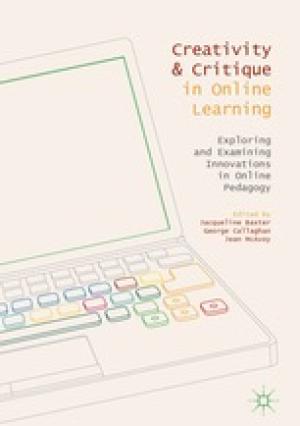
Online learning has come a long way in twenty years. Although distance education has been around in one form or another for a really long time, online education had fairly humble beginnings in California in the late 1990s. As noted in the foreword of Creativity and Critique in Online Learning, “At the end of the 1990s the internet was seen as an interesting application, but not necessarily relevant to all subjects or modes of teaching” (vii). The initial benefit of distance and online education was that it would connect learners together in a networked classroom that spanned further than four cinderblock walls. What initially started as a distance enterprise, where students would log in to a remote learning server and be funneled into a class with potentially dozens to hundreds of other faceless paying customers (and may or may not have received an actual education), the Learning Management System (LMS) has evolved into a “commonplace and essential piece of technology infrastructure in almost every university” (viii). Yet creativity does not come without critique, as is often the case when boundaries are stretched and broken. This volume provides a summary of the creative side of online learning as well as a critique of the overall process, at least within the purview of Open University’s experience as a leader in online learning, answering significant challenges and squashing anecdotal myths throughout. The editors and contributors, all of whom are either faculty at Open University or products of one of Open University’s online programs, seek to rewrite the narrative regarding online education. Rather than asking “Can online study really replicate the challenges and occasional joy of learning in a face to face environment?” (2), these contributors shift the focus to answering questions such as “How can [online learning] help teach the ‘hard to reach’ and how can it provide learning for those who have failed in (or rejected) learning in a face to face context?” (2). Putting aside such arguments as online education being more cost-effective in a bloated yet dwindling brick-and-mortar learning environment and what tools and techniques work the best in an online context, the contributors pull directly from their experience and ground their findings in action research that seeks to add a cogent and coherent voice to the ever-widening field of online learning studies. Creativity and Critique in Online Learning presents real-world problems with and in online learning with real-world solutions from real-world practitioners, some of which worked and some which did not. Of particular note in this volume are the chapters on developing effective forums (chapter 3), engaging students in informal learning communities (chapter 5), addressing concerns with academic dishonesty (chapter 7), and developing appropriate yet effective teacher-learner relationships (chapter 11). Overall, I found this volume helpful. As the director of a completely online graduate program in biblical studies and Christian leadership, I recognize the growing challenge of developing online learning experiences that are academically rigorous while also developing spaces for relational connection and personal growth. I was afraid this book would be another “do it our way” argument. However, the essays are more akin to the casual conversations we catch over coffee at a professional conference than the peer-reviewed “expert” keynote that we actually paid to hear.
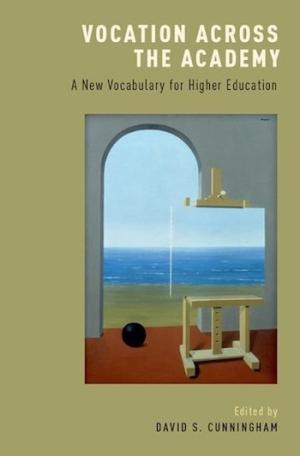
Against the backdrop of growing debate over both the nature and value of higher education, David Cunningham and twelve scholars offer what they believe may serve as a “common purpose” – vocation. Along with the word, “calling,” vocation has theological roots, but Cunningham argues that a “more expansive” approach to the word “is attentive to questions of profession, work, and employment” and “encompasses a much broader range of concerns that will arise during a college student’s current and future life.” The writers of this volume do not believe that appealing to the concept of vocation will eliminate conflict swirling around competing visions of the academy, but they do believe that the concept appeals to both the roots of the modern university and the goals of faculty from across the academy (3). With that goal in mind, Cunningham and his co-contributors divide their effort into four parts. Eschewing a disciplinary-centered approach to their work, they instead consider “four different pathways or approaches through which the disciplines can come into conversation with one another: first by emphasizing certain themes that are common to them all; second, by borrowing concepts from one discipline that can apply to many other disciplines; third, by focusing on the future lives of undergraduates…; and fourth, by considering some of the institution-wide obstacles that need to be addressed if the language of vocation and calling is to be perceived as relevant to all academic departments and programs” (14). In a closing epilogue, Cunningham notes that the volume demonstrates that neither vocation nor calling exhaust the concerns that arise from their use in the academy. The words, “responsibility, character, virtue, mission, covenant, mapmaking, storytelling, performance, work, [and] leisure,” along with others, figure in the contributions to this volume (315). That should come as no surprise, he argues. From the very beginning, Cunningham commends a definition of vocation that is “capacious, dynamic, and elastic” (315, cf. 10ff.). Accordingly, he argues that one should approach the issue of vocation prepared to use multiple vocabularies that reveal different, but interrelated discoveries. To have a vocation means that one is shaped by that calling (317ff.); that one is summoned “from without” (319f.); that one must decide what to do (320f.); that those who are called inevitably consider their link to the callings of others (321f.); and that they are compelled to think about the impact their vocations will have on the future (322ff.). This is the second of three volumes in an ambitious and welcome effort to recapture the inspiration of vocation as a locus for higher education. The first, published in 2015 under the title, At This Time and in This Place, focused on pedagogy. The third, published in January of 2019 appeared under the title, Hearing Vocationally Differently, and expands on the vocabulary associated with vocation, relying on contributors from diverse religious traditions. One may well wonder what the prospects will be for the project of this series. Embattled as the academy is – by forces both within and without – one would hope that scholars will find a common inspiration that will lend new energy and focus to their work. But even cursory attention to the debates roiling college and university campuses underlines the truth that “an optimist is someone who is not in possession of all the facts.” It is difficult to believe that disciplines that are struggling to define a shared vision of the work that they are doing could agree on a vision for the larger work to which the whole academy is devoted. The task that the writers propose is made all the more difficult by the choice of “vocation” as the organizing principle around which they attempt to rally their readers. As Cunningham himself observes, the verb vocare is transitive (317). As such, it implies that one is not only called, but one is also called by someone or something. The absence of a shared understanding of who or what issues that call - if anyone or anything does – underlines how little shared vision may be in the offing for the modern academy. For theological educators the answer to that question and others ought to be easier to achieve, but anyone who teaches in the modern divinity school knows better than that. As seminaries struggle to address declining enrollments, degree programs are crafted with an eye to the individual’s goals and the notion of vocation – and the spiritual formation that accompanies it – has slipped again to the margins of theological education. Where it still lingers, it is necessarily governed by private definitions. In the meantime, seminary faculties differ with one another as much or more on such questions as the faculties at any college or university. The effort made by Cunningham and his co-contributors comes, then, as both question and indictment: What is it about the concept of vocation that leads even a small but brave cohort of scholars without shared confessional commitments to imagine that they can galvanize their work around the concept? The indictment is this: What are the factors that have relegated the question of vocation to the margins of the very institutions that gave birth to the vocabulary?
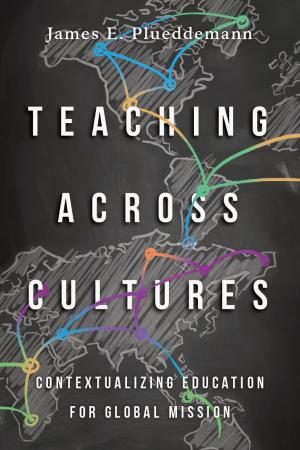
As a Roman trained missiologist who teaches intercultural pedagogy and ministry, as someone who grew up on the US-Mexican border and who has worked in religious formation since the age of twelve, I was drawn to this book’s title and cover design, a world map on a chalk board. I am blessed with a large number of international graduate students, most of whom will be returning to their home countries or will be called to work internationally. The book’s title seemed a tall order – but it did not in the least disappoint. Penned by a seasoned missiologist and professor who knows how to draw educationally from his extensive international travel and work abroad, the work is exceptionally readable, one which strives to integrate course content, or knowledge of the biblical tradition, with contemporary human experience, or alternatively phrased, an appreciation for an ongoing dialogue between a course being content-centered and student-centered. Plueddemann does this especially by engaging Edward Hall’s highly effective categories of “high and low context” styles of communication, together with Geert and Gert Jan Hofstede’s development of power distance. Filled with examples and anecdotes, not only from his own teaching but also from other practitioners appropriately placed at the end of every chapter, he makes a strong case for paying attention to biblical pedagogy, one which is profoundly experiential and cognizant of diverse contexts. His sources are carefully selected so as not to overwhelm the reader with jargon and very applicable to those wishing to respectfully do global Christian mission in a way in which Bible and culture inform each other, especially in contexts which are much more communal than our U.S. contexts. His brief inclusion of key learning theorists such as Piaget, Lewis, Dewey, MacDonald, and Freire show their continued relevance, and provide a necessary bibliography for further study. It is not often that we find good pedagogical material specifically aimed at teaching theology or religion, so this little gem is a welcome one, a work carefully tailored to shifting contexts, learning styles, and contemporary media globalization. Much to my amazement, Plueddemann’s tools can be applied to a variety of educational tasks such as teaching language, preaching, summer camp work, Sunday school, mentoring and coaching, and even parenting. His appreciation of the teaching potential of novels and other forms of art provides ways in which teachers unfamiliar with local contexts can begin to enter these learners’ worlds. Teaching across Cultures’ ecumenical sensibilities, similarly, such as the inclusion of the work of Thomas H. Groome, well-known in Catholic educational circles, makes it a useful text beyond the Protestant world. Will I assign this text? Definitely! My own use of some of the biblical and anthropological tools he cites will be enhanced by his examples of how they can be applied to educational and pastoral settings, not only to those which demand intercultural sensitivity, but even to those which we think we already understand.
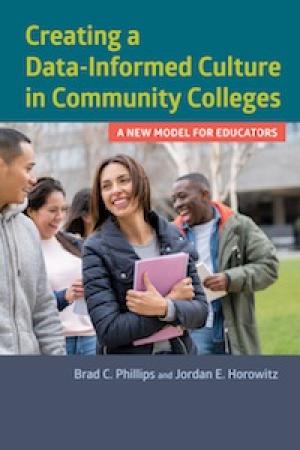
Armed with strong backgrounds in institutional research and effective educational leadership, Phillips and Horowitz provide educators with an excellent resource for improving academic success with proven data use strategies and practices for community colleges. A central, uniting focus of the book is the need for information to be contextual, “useful, useable, and actionable” (9), and the need to enlist the widest number of stakeholders within its ecosystem. Administrators, researchers, faculty, and staff are encouraged to be co-partners in cultivating academic excellence. Rather than placing data at the center, the authors advocate for a model that places “the use of data” at the center. The book is divided into three sections: (1) “A New Model for Data Use,” (2) “Putting the Model to Work,” and (3) “Case Studies of Data Driven Reform.” The first part outlines a new model for data use that is user-friendly, improves educational instruction, and maximizes student success, combined with intentional adaptation to those it serves. For example, “few educators want to [be] analysts; they want to be provided with useful information and assisted in applying it toward student success” (56). Attention is also given to analytics, behavioral economics, organizational theory and habits, and the role of emotion in decision making. In the second section, Phillips and Horowitz reveal a data use model that is put to work removing obstacles to student success. Specific consideration is given to leading and lagging indicators and the employment of backward mapping that begins with the identification of lagging indicators or goals. Attention is then refocused on the leading indicators that influence them, and which a college has the ability to control and reshape in proactive ways. Lagging and leading indicators have the ability to switch places from time to time. Scrutiny is also given to disaggregation and how different demographic subpopulations can impact the design of programs, services, and policies. The authors make use of a four stage, continuous improvement approach for use of educational strategies that moves from assessment, to planning, to implementation, to monitoring, and back again to assessment (110). They believe that data should be processed in manageable bites and reflect an institution’s unique cultural context and problem areas (176). When evaluating outcomes of particular programs or services, Phillips and Horowitz call for academic institutions to review all other policies and programs that may or may not have an impact, positively or negatively. When introducing data and discussing it educators need to make sure that the content is real, that they include moments of humor, that they engage with the data, and that it works towards a consensus in decision-making. Resistance is another key factor for community colleges to scrutinize. College staff often bring their “own history of belief and experiences to the process and accept only information that confirms those beliefs” (104). Helping people to move outside their comfort zones and embrace change can assist in creating a positive, data-informed culture. The last section provides actionable approaches and case studies drawn from community colleges from differing socio-economic and ethnic settings that intentionally choose to embrace a data-informed culture and foster proactive uses of information for student success. A failing institution was among the colleges examined – it had been on the verge of being shut down by state authorities because of dissatisfaction with its academic quality and student success. This book is more than a guide for interpreting data by academic researchers. It also provides a research-based, comprehensive, and practical approach for improving academic excellence in all areas, and amongst all segments of the college community. This book will help teachers of religion and theology to increase their classroom effectiveness – in lecturing and interacting with students.

Social media and the daily news both mark the continued normalization of violence. Given that one of the chief aims of liberal education is toward personal development and the attainment of civic responsibilities, the normalization of violence is a central issue with which twenty-first-century educators must grapple. To this end, Pedagogies for Building Cultures of Peace is a useful resource both for centralizing current research on structural and cultural violence and the concomitant dehumanization of the “other” (Chapters 1-4). Further, the book details the many benefits of engaging youth in structured critical dialogue about their experience and internalization of violence in many forms and leverages this dialogic strategy for the transformational aim of building peace and destabilization of structural violence (Chapters 5-9). This book is a theoretical treatment of a specific dialogic experience examining the normalization of violence. It is evident that the experience was significant for the participants, and the detailed reporting of the participant dialogue helps make clear some ways in which structures of violence are normalized for these youth. However, as with qualitative research – the difficulty lies in transferability, specifically in the question of how generalizable the experience of these ten youth is for a broader audience. In part, this challenge could have been alleviated with a more detailed description of both the methods used in the dialogic process itself and by providing more information about the participants themselves. That difficulty aside, the central argument – that safe, collaborative, and critical dialogue functions as a viable pedagogical strategy for building real peace – is compelling, even if the author does not provide practical details for creating this type of dialogue or these types of spaces (a brief outline of the dialogic structure utilized does appear in Table 10.3). Readers of The Wabash Center Journal on Teaching will find the final two chapters the most beneficial. These summarize the dialogue and extract pedagogical implications, which are supported by research in experiential learning, social constructivism, relational epistemology, and power analysis. Taken together, these chapters provide a robust theory that must inform teaching aimed towards peace. As Abidi observes, “education that neglects to challenge normalizations of violence, and the relations that maintain violence as an accepted norm in society, further reinforces unquestioned ideologies of the dehumanized other” (113). It is, therefore, no longer an option to say nothing about the normalization of violence in the classroom – rather collaborative critical conversation must be employed towards the end of peace.
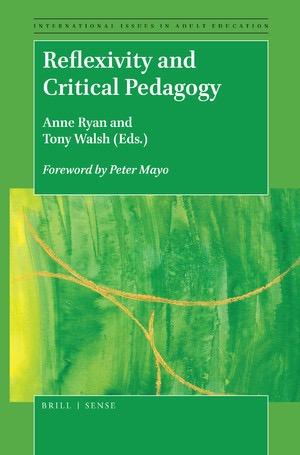
There are these two young fish swimming along and they happen to meet an older fish swimming the other way, who nods at them and says "Morning, boys. How's the water?" And the two young fish swim on for a bit, and then eventually one of them looks over at the other and goes "What the hell is water?” David Foster Wallace, This Is Water Upon reading this volume, I was repeatedly reminded of the late David Foster Wallace’s speech, “This is Water” (Little, Brown, and Co., 2009). Foster’s commencement speech hones in on some underlying themes of life many of those in higher education hope to instill in our students. Most importantly, I think, is the lesson that the most powerful influences on us are often those in which we are continually swimming but which we often cannot see. We must learn the practice of “seeing” the water we swim in. The practice is imperfect, messy, and will not make you particularly fun at parties, but it is vital for any transformative learning to occur. We can do this in a myriad of ways, such as those laid out in this volume, by practicing reflexivity. What is reflexivity? The editors, influenced by Foucault’s concepts of discourse, knowledge, and power, define reflexivity as “encompassing a critical assessment of the significance of environment, power, and context as well as subjectivity in the delineation and construction of knowledge” (1). Reflexivity implies “a responsibility to critically examine our world, and how we position ourselves, and are positioned in that world” (1). Reflexivity is not narcissistic navel-gazing; it involves an intimate interrogation and critical examination of the personal, political, and professional. It is a practice. Contributor David McCormack describes reflexivity as the “practitioner’s attempt to turn their awareness to whatever is happening at any given moment at a personal, interpersonal, organizational, and societal perspective and to use that to illuminate the interpersonal dimension in their work” (122). The self is not freestanding – it always has a context. Why is reflexivity critical to education? Education must be reflexive in order to avoid being merely indoctrination. Education can make space for reflexivity, can give educators and students an opportunity to analyze not just “what works” but also to interrogate for whom does it work and to what end. Learners need spaces to confront dominant narratives and cultures, and educational spaces can provide just that. Contributors to this volume are primarily affiliated with the Department of Adult and Community Education at Maynooth University in Ireland. Each was invited to “challenge traditional thinking in education” (10). The chapters of this volume exemplify a myriad of ways reflexivity can be practiced in educational spaces. Despite this variety, each of these contributions emphasize the critical imaginative element among practitioners, a willingness to see things as possibly otherwise. Whether the reflexive practice happens within discursive analysis, writing, theater-making, transformative learning, systems theory, defining citizenship, facilitative work, or narrative inquiry, it requires imaginative capacity and a willingness of the practitioner to critically examine the very bedrock of their experience and the systematic assumptions underlying their everyday reality. This book would be especially helpful for educators and administrators hoping to equip their students with theoretical tools and practical exercises aimed at “bringing to light dynamics of power which privilege conformity” and “revealing the normally occluded dynamics of dominant discourse”(6). It is also a resource for those who see themselves occupying hybrid spaces: those who acknowledge a multiplicity of knowledges and competing and intersecting realities and experiences, who interrogate and trespass boundaries, and, overall, who strive to “see” the water in which they swim.
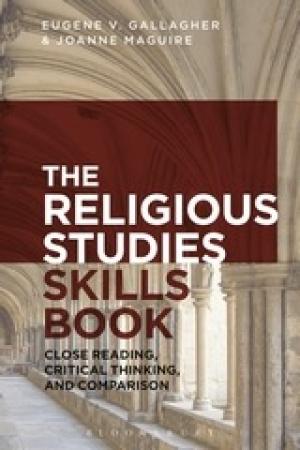
Gallagher and Maguire wrote The Religious Studies Skills Book for undergraduate students taking religious studies courses. Recipients of the American Academy of Religion’s Award for Excellence in Teaching and longtime Wabash Center affiliates, Maguire and Gallagher draw on the breadth of their experiences as scholar-teachers to craft an accessible book that covers the basics – and more. They dispel myths, like the assumption that teaching about religions in public universities is unconstitutional, and they clarify common confusion, including the distinction between studying theology and religious studies. They also offer insights into what makes the study of religion so compelling and worthwhile: Students of religion are in a field unlike any other. The field has interdisciplinary breadth and global and historical depth that can’t be found elsewhere on campus. Many students come to the academic study of religion expecting personal spiritual development. Although that might be an accidental outcome of exposure to ideas in any course, teachers tend to be strongly interested in developing students’ skills and knowledge, goals achieved in part by reading, observation, and discussion that brackets personal judgement and biases . . . If a single introductory course in religious studies teaches nothing else, it will at least show you that there are many other ways to understand the world. (69-70) I quote this passage at length because it exemplifies one of the two most important features of this book: the authors write to and for students. They do this from the first to the last page. I never felt like they overlooked the student to speak to a colleague. Midway through, I flipped back to the title page and wrote, “How many of us write for this audience? They’re taking students seriously!” It’s refreshing, and it is one aspect of the book that would make me want to assign it. The book’s other great strength is how the authors model what they expect students to learn. Most chapters include explicit examples. The chapter on comparison offers lengthy examinations of how comparison works using excerpts from sacred texts (Matthew and Science and Health with Key to the Scriptures) and scholarly ones (definitions of religion). In some places, the authors anticipate students’ observations, and in others, they expand their scope. For example, they note fairly obvious similarities between the gospel and Science and Health, and then they expand the comparison through a series of questions about authorial intent. In addition to the explicit examples, Gallagher and Maguire build an argument through the arrangement of the book’s chapters and draw on evidence from scholarship on teaching and learning. The companion website provides more general information and additional exercises, too. My main concern is how the book can reach its intended audience. Ideally, students in introductory courses would read and absorb the Skills Book. Realistically, the motivated majors in a third-year seminar will be carrying copies with dog-eared pages, and, years from now, graduate students learning how to teach will be lucky to find a copy with some dedicated major’s marginalia.
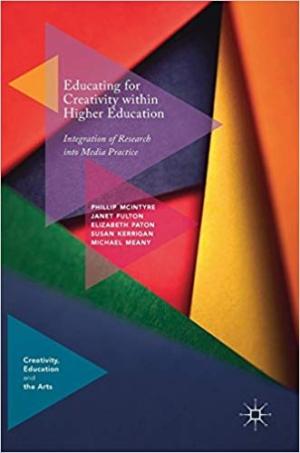
As our students encounter work in what is more and more a gig economy, the authors of this book have been thinking about the implications of such employment for those entering the workforce and also for those who wish to pursue creative endeavors either as full-time or part-time work. The authors focus on creativity as a locus for student and worker resilience and adaptation to changes in global economics. The first several chapters outline various theories of creativity. It is particularly useful that the authors elaborate on many varied theories of creativity within different academic disciplines and contexts. Chapter 1 includes thinking about creativity within a global context, and how different social, cultural, and political situations affect the development of ideas of what constitutes creativity, who is creative, and how they come to be creative. The authors consider the nature of creative development within both collectivist and individualist views of society. They also consider several religious contexts for the development of creativity, including thinking about humans as divine conduits, both as described in sacred texts (such as the story of Moses) and as the Muses working through artists. One strength of the early chapters is seeing the deep theory of creativity in a number of fields. In chapters 3 and 4, the authors turn not just to describing theories, but to challenging them, saying that some might misidentify creativity. The authors probe the sociology and social systems that allow certain types of creativity to become dominant in various societies, and which types of creativity are recognized by their societies. The confluence approaches and systems model, which comprise the central chapters of the book, looks at a number of ways in which creativity can fit or allow a person to thrive within a system. The authors highlight various features such as intrinsic motivation, domain relevant skills (such as knowledge of field and necessary technical skills), and creativity relevant skills. An overwhelming strength of this book is how the reader can look through the authors’ lenses of multiple disciplines and access their background research, ideas, and the main voices in their fields for others to know, which helps readers understand how these ideas apply in various contexts. In chapters 5 and 6, the authors turn from a descriptive project to a constructive one, considering how systems approaches can provide guidance for thinking about effective ways to develop creativity in higher education that will provide students and workers with the necessary tools to adapt to new work situations as our economies evolve. The authors then tease out implications and impacts of such a model and its adaptability to other contexts. All these confluence systems are deeply interactive, and recognize the context in which the person has lived and operates. It is here that the book best provides help to scholars and practitioners in theological and religious studies. While the book is written within the context of media studies, it is clear in the second half of the book where these systems approaches could apply to someone who wishes to either research or serve a religious community, and the authors have begun that work of thinking how this model can work in other contexts. In its last chapters, the book provides multiple ideas about how one’s context can positively shape the ability to develop and foster community.
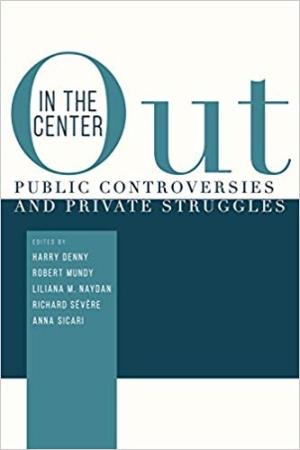
Out in the Center: Public Controversies and Private Struggles provides a fresh perspective on the inter- and intra-personal dynamics of writing center work. Building upon Greenfield’s and Rowan’s Writing Centers and the New Racism: A Call for Sustainable Dialogue and Change (2011), Condon’s I Hope I Join the Band: Narrative, Affiliation, and Antiracist Rhetoric (2012), and Denny’s own Facing the Center: Toward an Identity Politics of One-to-One Mentoring (2010), this edited collection presents the personal narratives of underrepresented voices in writing centers and invites critical conversation about the complexities of identity negotiation among tutors, writers, and administrators. While some writing centers claim to be neutral spaces where writing is engaged apart from the culture that produced it, this collection acknowledges the ways in which writing and collaborations around writing are always already both personal and political – shaped by a confluence of internal and external factors. Writers, tutors, and administrators bring their selves to the work, thereby making public their past, present, and emerging identities, which are inextricable from the social, political, economic, and cultural dynamics of the communities in which centers reside. The collection is organized into six parts – race, multilingualism, gender and sexuality, religion, class, and (dis)ability – some with more narratives than others. This imbalance likely speaks to the variety of submissions and also signals the need for even more narratives from underrepresented and marginalized perspectives. Additionally, while each part is purposefully arranged, the editors recognize that identities are intersecting and note in the review following each section that identity categorizations are fluid. Part I narrativizes the interplay between the reading or erasure of black female and male bodies in one-to-one consultations and the writing classroom and how those occurrences interconnect with public discourse on issues like black natural hair, Black Lives Matter, and black masculinity. Part II explores the benefits and complexities of multilingualism in the center and ways that tutors can leverage linguistic dexterity. Part III focuses on the role of gender and sexuality in the identity formation of writing center administrators and tutors. Part IV takes up religion, an identity-marker that is sometimes unseen, and asks how inviting disclosure of religious identities might challenge hegemonic norms. Part V considers how class converges with other identities in writing centers, inviting interrogation of economic standing and belonging. Part VI explores how learning differences can shape writing practices and influence pedagogical approaches to tutoring. The collection concludes with a final chapter and afterword that encourage readers to recognize the pedagogical and epistemic value of these lived stories in their own contexts and for future research. Engaging meaningfully and critically with these stories and the intricacies of intersecting identities that they underscore enriches our ability to create more inclusive practices in hiring, training, and tutoring – a worthy charge and a fitting ending for this valuable work.